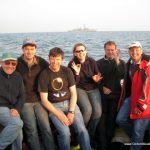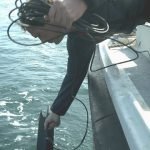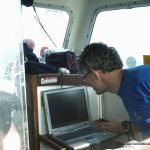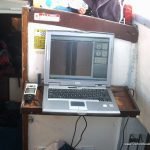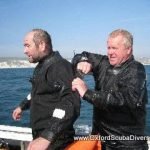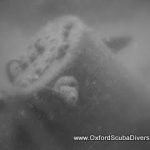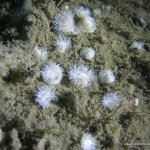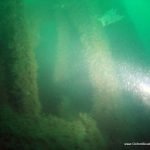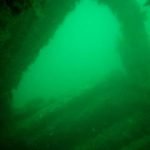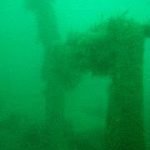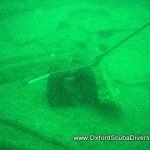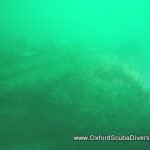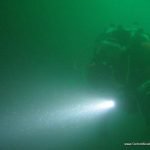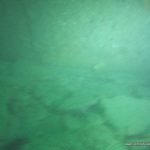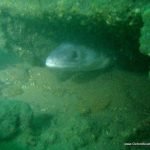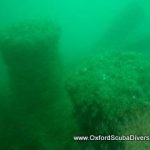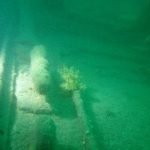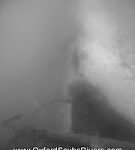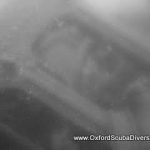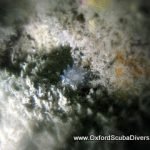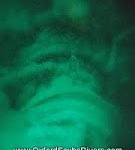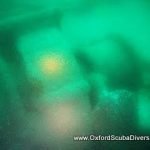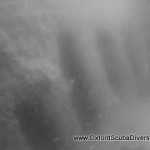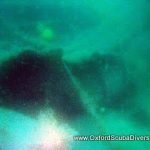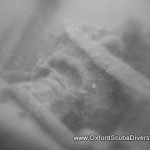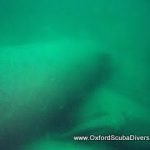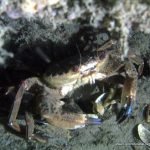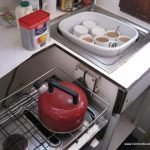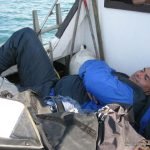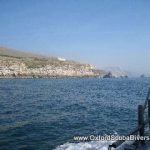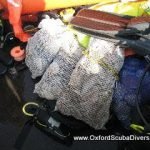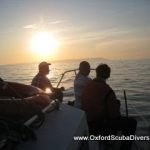Alex September ’08 Expedition
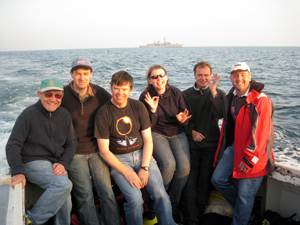
The Target: Simple really – finally figure out where the various chunks of the wreck are with respect to one another and make a very crude map of the site to guide us when looking to prduce a more detailed map later on in the project….If only it were that simple….
Read on for the gory details, how 50 scallops nearly sunk the boat, how the shot line nearly lost us the sidescan, how Andy manages to sleep just about anywhere and how despite all these we still came home with the goods!
The Dive Team: John Beer, Oliver Robertson, Andy Pickering, Kerrie Arnott, Brian Edwards and Phil Stubbs (also present were Chris Stevens (Expedition leader), Bob Chick (Scallop expert) and Dave Green (skipper)
The Trip Report
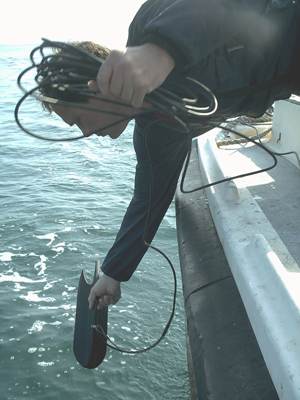 After a fairly poor summer of diving conditions in Weymouth we’d only managed to dive the Alex a few times over the season and were getting a little desperate to try to get some kind of advance on our preliminary swim-over sketch. Problem is that a ship which was originally 128m long is rather touch to do as a swimover, especially when it’s broken into two and you’re not entirely sure where the two bits are relative to one another.
After a fairly poor summer of diving conditions in Weymouth we’d only managed to dive the Alex a few times over the season and were getting a little desperate to try to get some kind of advance on our preliminary swim-over sketch. Problem is that a ship which was originally 128m long is rather touch to do as a swimover, especially when it’s broken into two and you’re not entirely sure where the two bits are relative to one another.
We decided to try to get hold of a sidescan sonar unit to tow over the wreck and get some kind of rough overview – it’s a risky idea as we’ve no real experience of using this kind of kit before (except for Chris who’d looked over someone else’s shoulder once on a sea trial…). We found a company in Aberdeen who specialise in all kinds of seabed survey kit who are willing to rent out sidescans for a few days at a really good price. (Tritech international). We duly booked a unit and planned to take the club hard boat (Gemini II) on a trip to scan the wreck and then maybe get in a couple of dives. Alas, due to everyone’s schedule we ended up on a weekend with only marginal slacks and those late in the afternoon so it was less than ideal to try to fit all this in….
The sonar was delivered to Oxford and Phil brought it down to Weymouth, Chirs and Kerrie came straight from Heathrow airport on Friday night armed with power inverters, laptops and lots of cables to hook up the sonar and gps, 8 divers, one skipper and one scallop addict arrived at the boat on Saturday 27th of September to find a glorious sunny day with no wind – ideal.
As we’d never used the sonar before we decided to get some practice with it at a site we knew well and so headed off to the Blackhawk wreck site in Worbarrow bay. After putting 5 divers on the wreck we deployed the sidescan and begun a sweep alongside the wreck. Amazingly, it worked first time and we were able to get a nice image of the sand ripples in the flat area leading up to the site and then see all the wreckage of this chunk of the wreck.
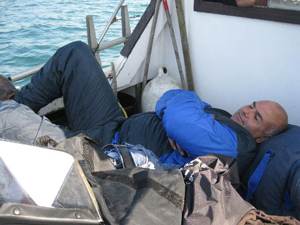 Once we’d recovered our divers who’d had a great dive and seen more of the wreck than is often the case (so many dives in the vicinity of the wreck in the past….) we had to feed the scallop addicts on the boat . Andy chose this moment to have a quick nap – o top of a pile of gear – he must have an amazingly well padded undersuit…..
Once we’d recovered our divers who’d had a great dive and seen more of the wreck than is often the case (so many dives in the vicinity of the wreck in the past….) we had to feed the scallop addicts on the boat . Andy chose this moment to have a quick nap – o top of a pile of gear – he must have an amazingly well padded undersuit…..
Three lifting bags later…. the ‘if it moves eat it’ divers re-appeared, some slight buddy separation seemed to have gone on but all was well we now had even less room on the boat (9 divers and crew, their gear, one sidescan, three sacks of scallops…)
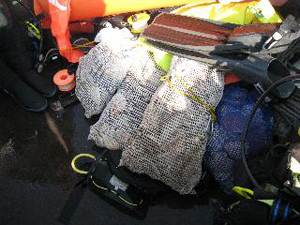 All in all this left us with only an hour before the slack so full steam (well diesel) ahead to the Alex (which is not so quick at only 7.5 knots). for some reason Dave let Chris (“I hate boats”) drive ! Amazingly we made it there without sinking and pretty much immediately found some bottom targets on the conventional sonar. Dave applied his expertise here and found some nicer ones slightly North of the marks from the chartplotter where we deployed our shot. Only 25mins left before slack so we elected to go for the dive first and then scan later. Everyone kitted up and in we went.
All in all this left us with only an hour before the slack so full steam (well diesel) ahead to the Alex (which is not so quick at only 7.5 knots). for some reason Dave let Chris (“I hate boats”) drive ! Amazingly we made it there without sinking and pretty much immediately found some bottom targets on the conventional sonar. Dave applied his expertise here and found some nicer ones slightly North of the marks from the chartplotter where we deployed our shot. Only 25mins left before slack so we elected to go for the dive first and then scan later. Everyone kitted up and in we went.
There was still a lot of plankton about so the descent was quite ‘atmospheric’ with little stringy snail trails of mucus floating by everywhere – lovely. On arrival at the bottom we found the shot sitting on the deck of the wreck at 25m! RESULT – Dave Green’s amazing shotline skills score again. Only problem was that none of us recognised this part of the wreck!
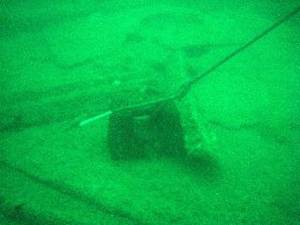 Near the shot was a weird large standing rectangular frame with a series of hull ribbs making a clear line alongside it. Swimming across this there were pieces of propshaft and bearing visible though the slumped wreck hull, a little beyond this the pile of wreckage drops down to reveal clear seabed after which a nice piece of hull is still intact – rivets showing, standing about 4m u off the bottom.
Near the shot was a weird large standing rectangular frame with a series of hull ribbs making a clear line alongside it. Swimming across this there were pieces of propshaft and bearing visible though the slumped wreck hull, a little beyond this the pile of wreckage drops down to reveal clear seabed after which a nice piece of hull is still intact – rivets showing, standing about 4m u off the bottom.
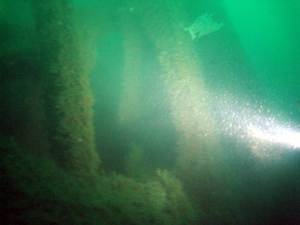 Crossing over this ( still nothing recognisable) we found a tangle of girders that may have been a deck support – small swim through and then a pair of bollards next to another pair – slightly decayed. Moving back along the other side of the wreck we found one of the huge masts (there were two) laid on the bottom pointing roughly away from the wreck. Odd diamond shaped structures were mounted halfway along and a large lobster was sheltering under the tip.
Crossing over this ( still nothing recognisable) we found a tangle of girders that may have been a deck support – small swim through and then a pair of bollards next to another pair – slightly decayed. Moving back along the other side of the wreck we found one of the huge masts (there were two) laid on the bottom pointing roughly away from the wreck. Odd diamond shaped structures were mounted halfway along and a large lobster was sheltering under the tip.
At this point we needed about 18 mins of deco to surface so decided to call it a day and deployed our DSMB for a brief drift across the wreck before a lot fo fairly boring deco……
Once back aboard we got busy with the sonar. the GPS played silly buggers for a while which nearly stopped us getting a reading, we lost the shot line as it’s buoy was pulled under by the current, and then managed to get the systems working properly and begun scanning. Did about 20 mins of scanning and then realised that the running lights were not working and it was going to get dark soon so pulled in the towfish and headed for Weymouth. Had got some images but not really sure if we’d really hit all the wreck this time out.
Over our vast Chinese banquet (Sea View all you can eat for £16 special) that evening we discussed what to do next – as slack was even worse on the next day we decided to forget about the project and go diving.
All in all we were not sure this had all been worth it – but we decided to wait until we’d looked again at the data.
Sunday we did the fast (3-4 knots) drift down from Grove point – great fun unless you touch the bottom…….
Had a quick scan of the harbour wall and the Hood, plus found the barge / landing craft and cannon on the fort, before going looking for the elusive British Inventor. Did actually find it with the sidescan but it’s a very small site and doesn’t really stand up very high so ended up diving the ridge and groove reef system nearby (with no current). Some more Scallops were located and brought up and a large plaice just barely escaped our goodie bag…..
The Results
 So, all back on dry land, safe and warm in the clubhouse we looked over the data. At first it looked pretty confusing but carefully looking at a combination of the GPS coordinates and the recorded data we managed to find a couple of data segments that make some kind of sense. After a little effort with rescaling we realised that we have in fact got a very nice scan of the wreck site which very clearly shows the two sections of the ship.
So, all back on dry land, safe and warm in the clubhouse we looked over the data. At first it looked pretty confusing but carefully looking at a combination of the GPS coordinates and the recorded data we managed to find a couple of data segments that make some kind of sense. After a little effort with rescaling we realised that we have in fact got a very nice scan of the wreck site which very clearly shows the two sections of the ship.
On the scan we’ve combined the scaled image of from the sidescan with a drawing of the ship layout to the same scale. The bow can be seen very clearly to the North of the image with a dense black shadow showing it stands very hgh off the seabed. (Click on the image for a bigger version)
On an earlier dive this year John Beer and Chris Stevens visited the bow and found it standing at last 7 metres off the seabed and relatively intact. To the South you can also make out the main body of the wreck much more fattened. On the September expedition we found this section stands 5m off the seabed but is very badly damaged. This is borne out from the sidescan with the width of the southern section being much larger than the original 57ft beam. The structure here is much harder to work out and will take a lot more diving to get a better picture of. At this stage we’re not even sure which end of this is the stern and which the forward end where the mine explosion occurred.
Chris Stevens (OWTO) October 2008
Photos from the expedition!

